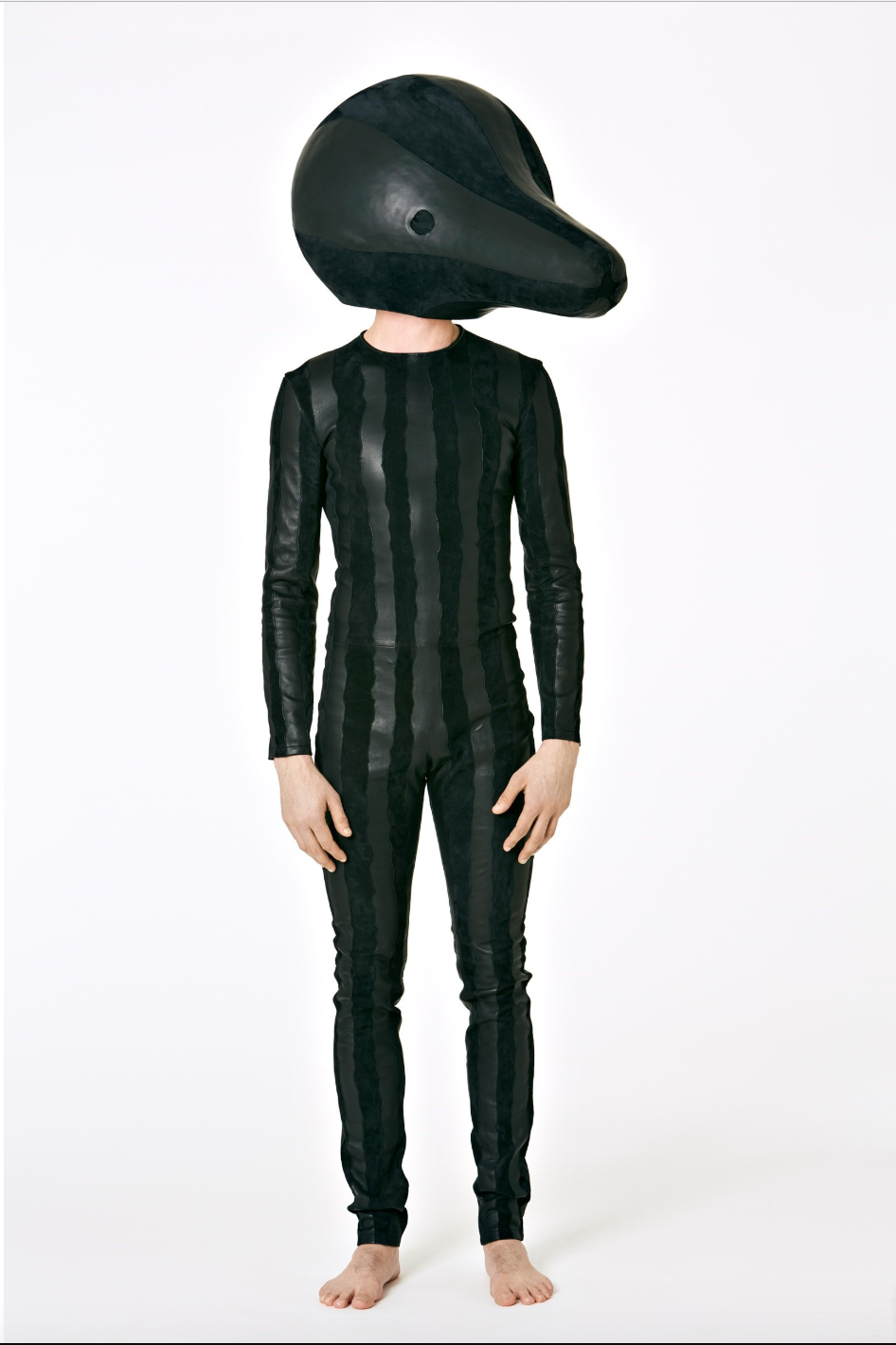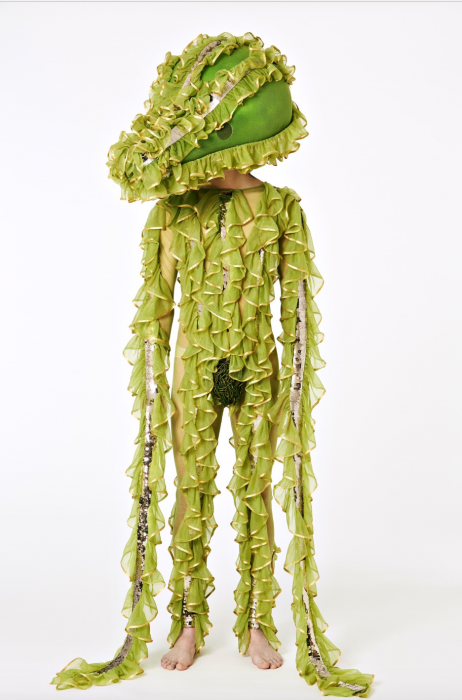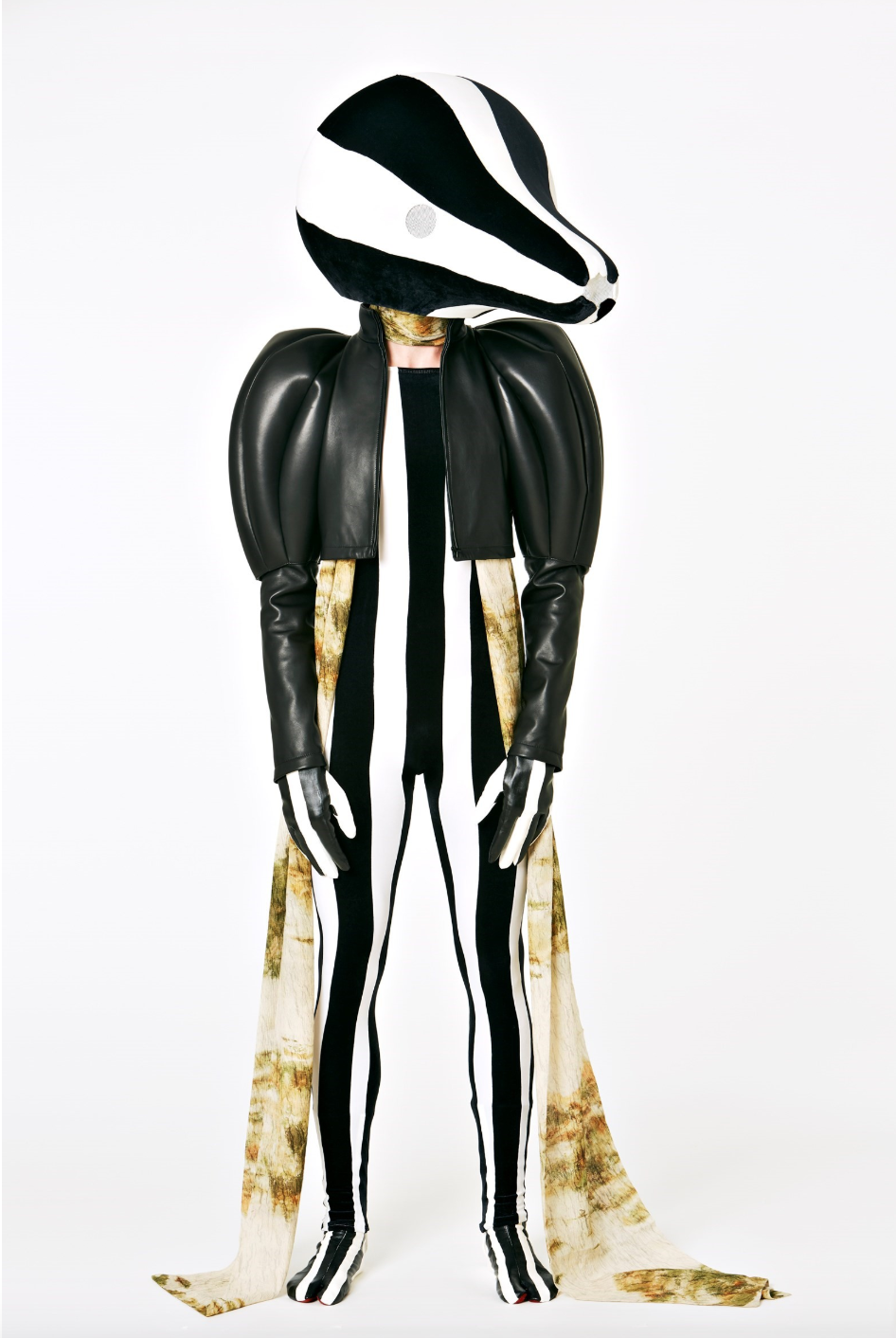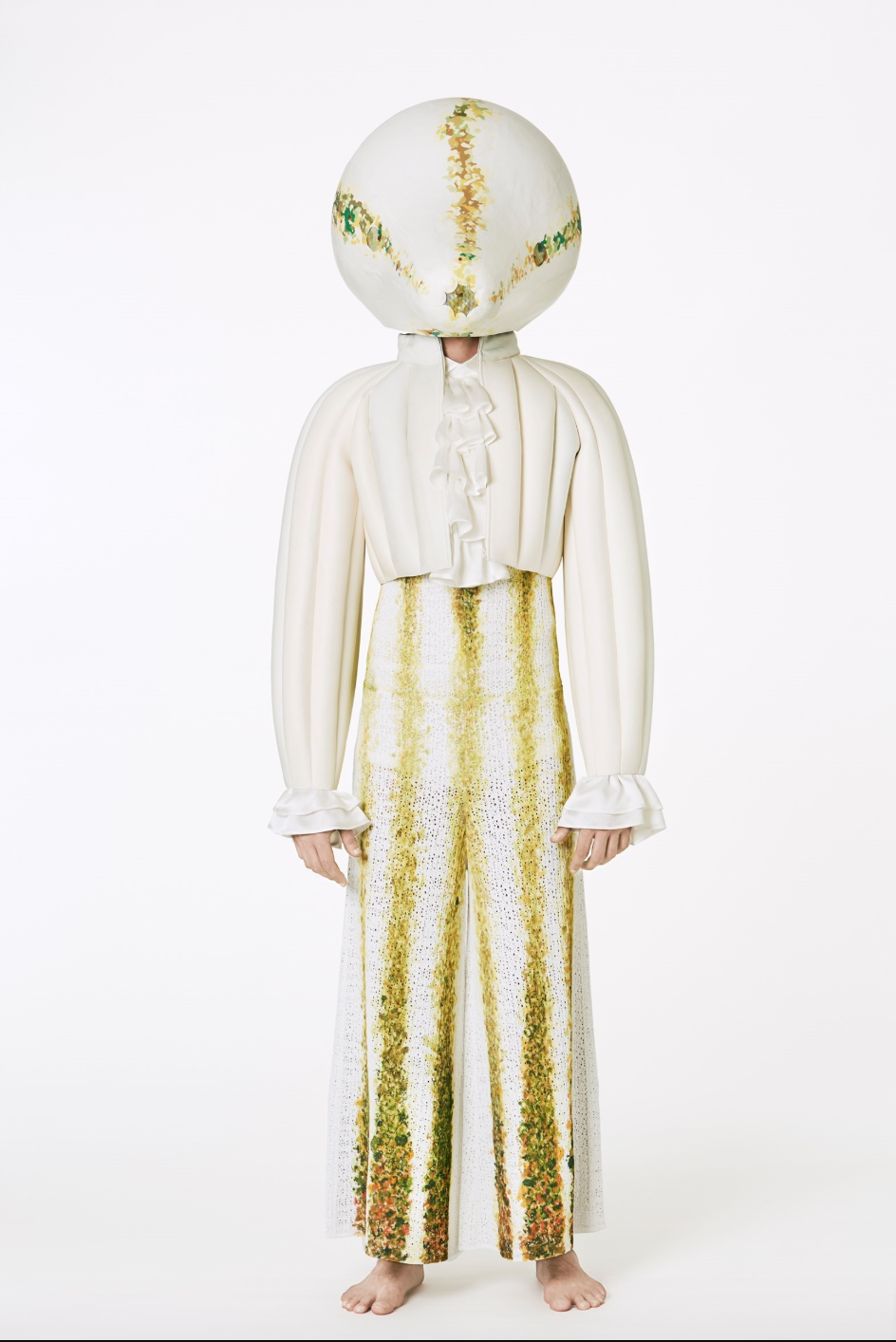Anthea Hamilton
THE SQUASH
Credits
text by: Eline Hoyois
performance photographer: Eleonore Moreau
« birth of a sculptural performance :
the Anthea Hamilton and Jonathan Anderson’s Squash »
At the heart of the Tate Britain Museum, the vast and splendid spaces of 1937’s Duveen Galleries, the first public galleries specifically designed for the display of sculpture in England, host annually a British artist to take over the space with a new artwork piece.

This year, Anthea Hamilton was selected to share a piece of her art. Nominated for the Turner Prize in 2016 for her exhibition Lichen ! Libido! Chastity!, she turns out to be the first black woman to produce a commission for this place. Through her unique contribution, she shares a work entitled « The Squash » that is both absurd and thoughtful, mixing performance and sculpture in an absolute symbiosis. She covered the floor of the impressive neoclassical architectural gallery with 7,000 white square titles. In collaboration with the set designer Dylan Atkins, the structure of the place becomes spatial, evoking a municipal swimming pool or the vast bathroom of a Royal Suite at the Claridge’s Hotel.



This border between floor and ceiling serves as a reference for the performer who moves through plinths, which serve as podiums for items from Tate’s collection. The artist has chosen nine existing sculptures from the museum; the tenth figure is none other than Bernard Meadows’ bronze crab which was lent by The Hepworth Wakefield gallery where Anthea was exhibited in 2016. Among the works, three models by Henry Moore recognizable by their modernist curves are placed in the vast space. Anthea was interested in the materials used and the shape of the selected works. The selection she made was a purely aesthetic choice that intends to push the interaction between the sculptures and the solo performer in a squash-like costume.



The disproportionate half-pumpkin half-squash head of the performer’s mask,easily recognizable, enlightens the name of the exhibition. His various costumes are colorful; the cuts of his jackets are inspired by the shapes , the textures and the colors and the clothing reminds a harlequin costume. The seven organic textured outfits were designed in collaboration with Jonathan Anderson, creative director of Fashion House Loewe. He declares: « It’s really interesting working with someone who doesn’t do fashion because it kind of makes you love it again. You start looking at materials, and start thinking about all those simplistic things that you’ve forgotten ».


It was Hamilton’s interest in a photograph about improvisational theater between the 1960s and 1970s that germinated this performance in her mind. The original photo comes from a dance scene inspired by the Hopi culture of American choreographer Erick Hawkins. Anthea has however lost the image, which adds a mystery to the work itself. Another main influences in the creation of this project was Antonin Artaud’s theatre of cruelty. It is through an intense theatrical experience, combining props, magic tricks, special lighting, primitive gestures and articulations, where torture and murder mingle that the author sought to touch his audience. The final goal was to shock in order to enable the spectators to confront the primary elements of life and the scene is reminiscent of a painting by Hieronymus Bosch. This performance, at the border of the carnivalesque, is on view until October 7th, 2018 at Tate Britain, Millbank, London. Only four months left to enjoy this Commedia dell’arte reviviscence!


top

